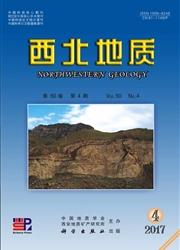

 中文摘要:
中文摘要:
通过对西安周边地区11个采样点饮用水中砷含量的调查分析,结果表明西安南部秦岭地区和西安东部的饮用水中砷含量较低,西安西部户县地区砷的含量明显高于其他地区,达到了0.047mg/L,已基本上接近了轻度污染的标准。综合分析认为,造成这一地区砷相对富集的原因并非单一因素,而是自然因素和人为因素综合作用的结果。户县地区地处秦岭造山带,位于商丹断裂带以北,岩浆侵入体和金矿床的存在可能是高砷环境的主要原生物源。位于商丹断裂带以南的镇安地区同样岩浆侵人体普遍存在,岩石地层中砷含量相对较高,但秦岭地区饮用水中砷含量并没有表现出异常现象,进而说明含金矿床带的存在可能是影响户县地区饮用水含砷量异常的原因之一。
 英文摘要:
英文摘要:
In this article, the author analyzed arsenic and selenium for drinking water at Xi'an peripheral locality 11 sampling point and found that the arsenic content in drinking water is lower in south (the Qinling area) and east of Xi'an. In Hu county area west of Xi'an arsenic content in drinking water is higher than other areas obviously and has achieved 0. 047mg/L, approaching the mild pollution standard. The generalized analysis shows that the reason which causes this local high arsenic concentrates relatively is not single, but a combined result of natural factors and the human factors. Hu county area is situated at the Qinling orogenic zone, north of shangdan fault zone. Magmatic intrusive rock and golden ore deposit are possibly the main mother substance sources for the high arsenic environment. Magmatic intrusive mass in Zhen'an area lying south of Shangdan fault zone is the same as Hu county, so the arsenic content in the rock stratum is higher relatively. However, the arsenic content in the Qinling area drinking water is normal; furthermore, the golden ore zone is one of the factors that affects arsenic content in drinking water of the Hu county area.
 同期刊论文项目
同期刊论文项目
 同项目期刊论文
同项目期刊论文
 期刊信息
期刊信息
